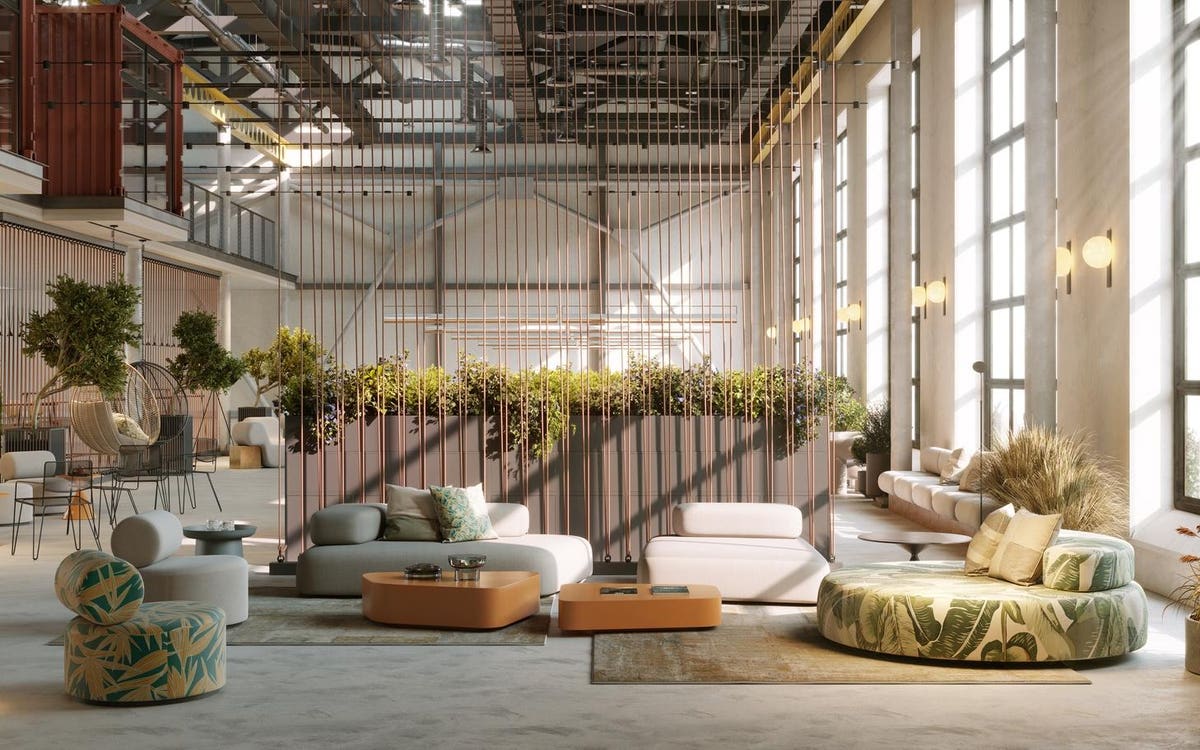CEO and Founder of All Furniture Services, a top repair and restoration service.
In the realm of interior design and home and workplace furnishing, one of the most common challenges faced by both consumers and professionals alike is the fitting of oversized furniture into tight or unconventional spaces. The struggle to navigate narrow stairways, doorways and cramped elevators often results in a frustrating impasse. This article delves into the art of space optimization and what companies can do to educate customers, prevent mistakes and mitigate issues when they arise.
The Modern Conundrum: Oversized Furniture Meets Constricted Spaces
Modern spaces are increasingly diverse, ranging from sprawling suburban homes to compact city apartments, historic buildings with tight stairwells and open-concept offices that still need defined zones. While furniture trends have favored larger pieces with bold designs, these grandiose pieces often meet their match when confronted with the limitations of real-world architecture.
In a bind, professional furniture disassembly and assembly companies can help. These skilled technicians specialize in the art of precision disassembly, ensuring that cherished pieces can gracefully traverse narrow corridors, confined spaces and old building quirks. But there are also things that manufacturers and retailers can do to prevent the all-too-familiar spectacle of a couch wedged in a stairwell or a conference table lodged in a doorway.
Common Mistakes When Purchasing Furniture
In order to help customers and designers make better-informed decisions, it’s important to familiarize yourself with some of the most common mistakes. These include:
• Neglecting to measure or not measuring the space accurately. Customers should measure not just the room’s dimensions but also entry points like doorways, stairwells and elevators.
• Ignoring the room’s layout. Failing to consider the layout, including traffic patterns and functional zones, can lead to cramped and impractical spaces.
• Forgetting about scale. Oversized furniture may overpower a small room or appear dwarfed in a large one.
• Disregarding ceiling height. Low ceilings may require lower-profile options.
• Ignoring existing design elements. Mismatched colors, textures or aesthetics can lead to a discordant look.
• Focusing solely on aesthetics: That said, functionality should not be sacrificed. Oversized furniture should serve its intended purpose without hindering comfort or utility.
Improving Customer And Designer Education
To address these mistakes and challenges, furniture brands, stores and manufacturers can take several proactive steps to educate both interior designers and customers.
Provide comprehensive product descriptions.
Armed with accurate measurements, consumers can more confidently select pieces that will fit harmoniously within their designated spaces. Manufacturers and retailers can help by providing detailed product specifications on their websites and in-store displays. Descriptions should include not only standard dimensions like length and width but also depth and angles. Visual aids, such as diagrams or 3-D models, can also help customers understand the product’s shape and size better. Encourage clients to diligently assess all dimensions, including entry points, pathways and corners, before purchasing.
Utilize virtual reality.
Embracing technology like VR can revolutionize the furniture shopping experience. Customers can virtually place furniture in their homes to assess its fit and aesthetic appeal. This immersive experience can also help prevent costly misjudgments.
Offer professional measuring services.
Brands and stores can offer to send trained professionals to visit homes or offices to take precise measurements of spaces and suggest suitable furniture options. This service can not only help customers make informed choices but also give you the opportunity to interact more directly with consumers.
Pose helpful questions.
Manufacturers can provide online surveys or quizzes that help customers and designers understand their specific needs better. Questions about room dimensions, existing furniture and design preferences can guide users toward suitable furniture options.
By addressing these issues and implementing educational initiatives and practical solutions, furniture brands and stores can empower customers and interior designers to make informed choices, reducing the likelihood of misfitting oversized furniture in tight spaces and enhancing the overall design experience.
Brands can also consider offering modular furniture units, allowing users to adapt and customize their arrangements as spatial constraints demand. This forward-thinking approach not only eases the logistics of furniture placement but also grants the flexibility to reconfigure layouts without sacrificing style or comfort. By integrating modular designs and meticulous measurements, the path to harmonious interior spaces is paved with ingenuity, efficiency and a profound appreciation for the interplay between form and function.
In conclusion, as the world of interior design continues to evolve, the synergy between oversized furniture and confined spaces remains a challenge. Nevertheless, this challenge is not insurmountable. Armed with education, tools and services, consumers and designers can confidently navigate the intricate dance between space optimization and stylish aesthetics. The art of fitting furniture into tight spaces is indeed a delicate one, but with the right partners and a dash of foresight, it becomes a choreographed masterpiece.
Forbes Business Council is the foremost growth and networking organization for business owners and leaders. Do I qualify?
Read the full article here





